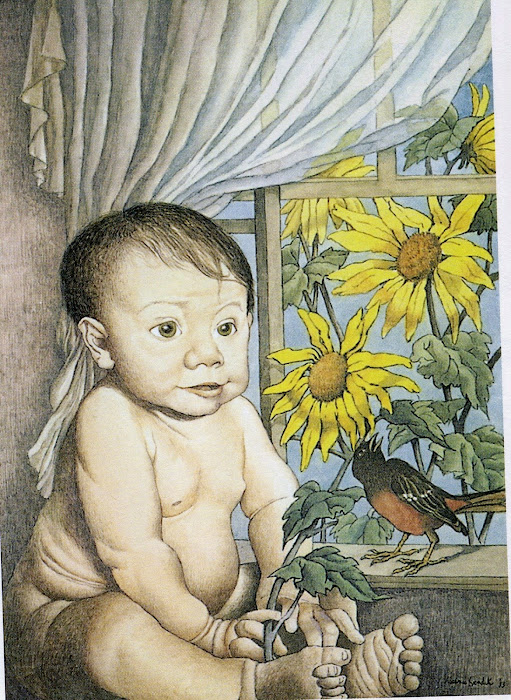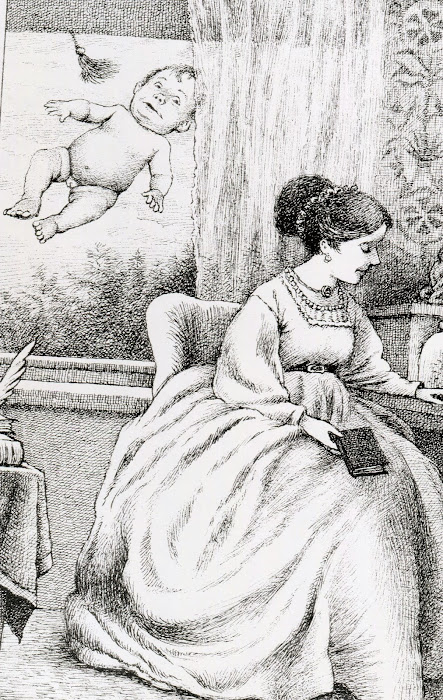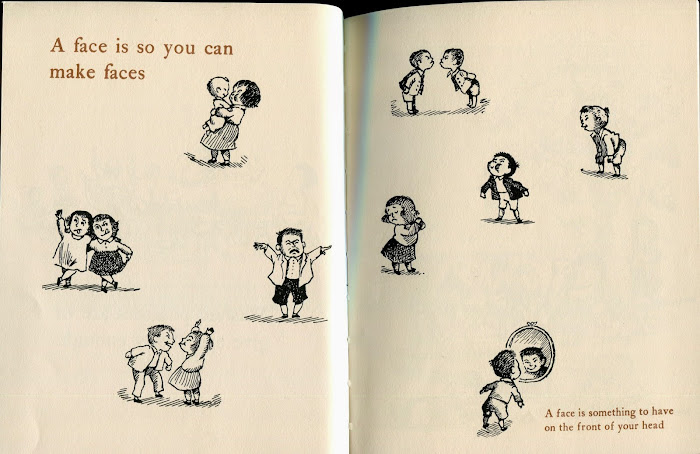Helen Duthie / Sendak’s Windows
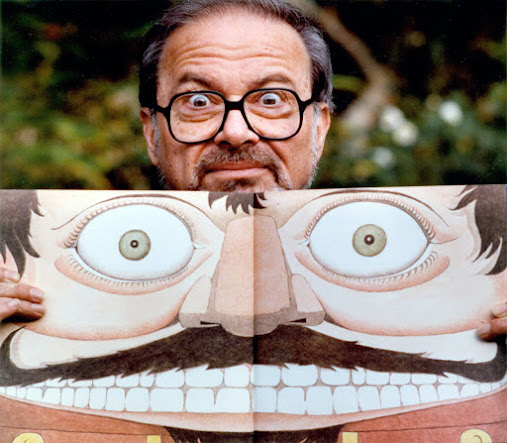 |
| Maurice Sendak |
Sendak's Windows
Ellen Duthie
Monday 3 November 2014
Last month the Society of Children's Book Writers and Illustrators in Spain (SCBWI) had invited me to give an informal talk on Sendak.
Over twenty-five people came along to what had initially meant to be a 'bring along a few books and talk about them' kind of affair, so I had to prepare more of a presentation, the notes of which I share below for anyone interested. These are notes for my own personal use, with only some references included (I'll be completing those over the next few days).
Who am I?
"As I imagine most of you know. I'm a writer and translator of, among other things, Maurice Sendak's Outside Over There, which will be coming out in Spanish before the end of the year, published by Kalandraka, with the title Al otro lado. I write too many blogs –one on children's literature, focused on the experience of reading out loud (We Read it Like This in English and Lo leemos así in Spanish), and several on philosophy for children -I am also a teacher and writer of philosophy for children.
"As I imagine most of you know. I'm a writer and translator of, among other things, Maurice Sendak's Outside Over There, which will be coming out in Spanish before the end of the year, published by Kalandraka, with the title Al otro lado. I write too many blogs –one on children's literature, focused on the experience of reading out loud (We Read it Like This in English and Lo leemos así in Spanish), and several on philosophy for children -I am also a teacher and writer of philosophy for children.
When the SCWBI kindly invited me to give this talk a few months ago, I asked them what kind of thing it was, what I was expected to do. 'Nothing too formal', came the answer. 'Just come and transmit us some of your passion for Sendak.'
I know I could have come here loaded with lots of marvellous books and we could have sat here and read them and said how wonderful they all are. We could have sat here and repeated SENDAK IS MARVELLOUS, SENDAK IS MARVELLOUS, SENDAK IS MARVELLOUS for two whole hours.
But I thought that besides getting together and enjoying how marvellous Sendak is, I would take the opportunity to share with you a few things I've been thinking about for a while now. Over the last few years, every time I read a Sendak book, every time I read something about him, or watch a documentary or interview, I find myself thinking about a series of elements that keep coming to mind.
Windows!
I'm going to talk about windows. Sendak has lots.
Here is Higglety Pigglety Pop heroine Jenny looking out of the window and thinking 'there must be more to life than having everything'. It is quite obvious she has a clear inkling that the 'more to life' is that side rather than this side of the window. Here the window serves as a frontier of the routine-like, desperately complacent life that is too well known to our heroine, and the hope for something better, more entertaining, that brings sense to the dog's life.
Also in Higglety Pigglety Pop but a little later, another window in another house becomes the void down which 'everything' disappears. The dog no longer has everything. Baby in the suitcase makes quite sure of that.
The following image does not belong to a book but to a poster to raise hunger awareness. The baby next to the window, inside over here, is solid, with those sunflowers pushing through the window and injecting life inside.
This other baby outside over there seems rather less solid. It is The Light Princess, by George MacDonald. Here the window separates us from the well-anchored everydayness of the interior and the weightless fantasy of the exterior.
There are also moving windows. In Ruth Krauss's I Want to Paint my Bathroom Blue, the windows travel with the boy.
In Kenny's Window (the first book both written and illustrated by Sendak), the window serves as a frontier between the reality of the boy's bedroom and the real but unknown world outside over there:
But it also separates the reality of the bedroom and the fantasy within the boy's mind:
In the book, Kenny has a dream and in the dream he meets a four-legged rooster who asks him seven questions. One of these questions is 'What looks inside and what looks outside?' 'A window' is the answer.
And, indeed, windows are not always lookout points. They can also be 'lookin' points, they can offer an interior horizon:
 |
| Scanned from Maguire, Gregory. Making Mischief, A Maurice Sendak Appreciation. Image from Jack Sendak. The Circus Girl. Illustrations by Maurice Sendak. |
Windows are also good as protection from the unknown world that is out there. One of Kenny's lead soldiers mutters thoughtfully, while considering whether to escape or not: 'That's the world. And it's miles long. We'll get lost.'
It is also a measure of the world you yearn for or the world you are satisfied with. Of the world you see and the world you don't see: of one's horizon.
Another scene from Kenny's Window: 'In a house across the street, a window opened and a man holding a baby leaned out. "Look", said the man, pointing his finger. "Look at the pretty snow flakes". But the baby only laughed and pressed her finger against the man's mouth. And the man kissed the little finger. “Look outside the window!", he shouted. "Outside!". But the baby saw only the man's face."
And again, the window as the border line between reality and fantasy and that great rooster with four legs. I just had to show him:
In Outside Over There, a window lets the dark reality from beyond into the safe comfort of the home but also lets Ida out into the dream/nightmare reality where the goblins dwell so that she can straighten things out.
In fact, in Outside Over There, the window metaphor is overarching. Sendak often referred to the other side of the window as 'Outside Over There' ("Really Rosie", in Caldecott & Co. [page 180]), referring to the side we look at, but don't necessarily touch, what's out there, and commands our respect and fear. The world of fantasy, yes, but also the real world, with all the fears it may arouse in us. In an interview, talking about Kenny’s Window, he referred to it as 'the first time I was brave enough to go “Outside Over There”. [reference to follow]. But we will read and talk about Outside Over There in a while. Back to windows.
In Sendak's work, the window is a frontier -a very permeable one at times -between reality and fantasy. It is a symbol of inside and outside, safety and uncertainty, but also of perpetuation and transformation. Outside there is risk, but also 'the only way forward' in a sense, if one wants to come out of childhood and life alive. The 'only way' of facing the reality we live in and managing to transform oneself in order to continue surviving.
But I am also and particularly interested in Sendak's literal window: the window of his childhood home in Brooklyn. I am interested because it takes us back to Sendak's beginnings as an illustrator and author of literature and I think it gives a series of pointers for reading his work and starting to understand the reasons why he is so marvellous.
One of the windows of his house gives us a pretty, picturesque view. It places us in Brooklyn, but perhaps doesn't tell us a whole lot more.
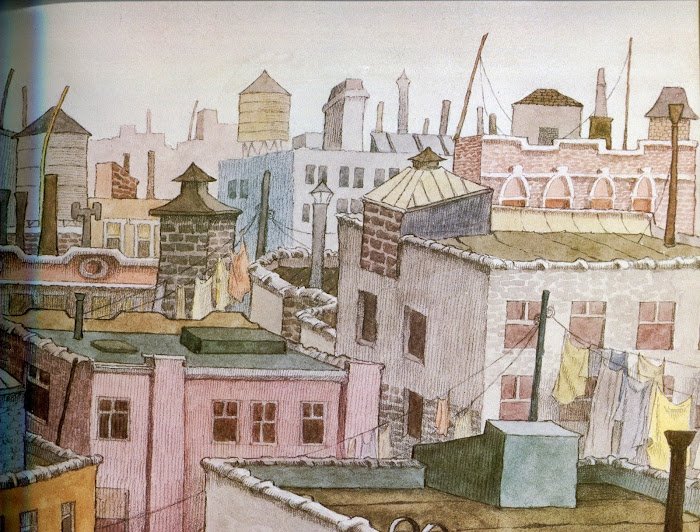 |
| Brooklyn rooftops, a background painting for the animated film Really Rosie, starring the Nutshell Kids, 1974. Pencil and tempera. 9 x 21". Scanned from The Art of Maurice Sendak, Selma G Lanes. |
What was really interesting was what went on outside the other window:
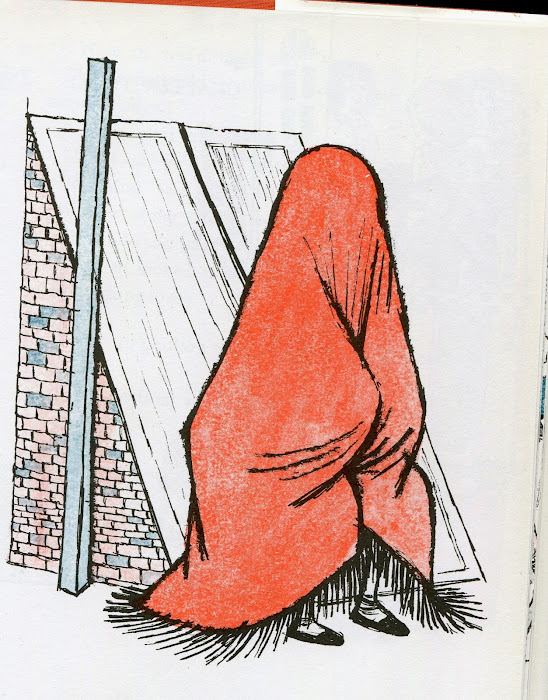 |
| Scene from The Sign on Rosie's Door |
What was going on? What was the girl doing? It makes you want to stay and find out more. It makes you want to stay and watch for a while.
Sendak's Gaze
And that is just what Sendak did. He stayed and watched for a while. And he watched and watched, drew and drew and listened and listened, scribbling hurried notes of all the fantastic things that came out of the mouths of the kids in the neighbourhood playing under his window. Sendak was a sickly child, and this gave him plenty of chance, as a young kid, teenager and into his twenties, to look out and watch, observe, listen and draw what he saw and write down what he heard.
What a literary education! Sendak learnt how to look with literary purpose (even before knowing what he was doing, perhaps) and he trained that gaze. He learnt how to pick out fiction from reality, developing an author's gaze and ear.
This is what interests me. The window as observation point. As a point for learning how to observe reality. As a point from which to acquire and develop an author's gaze. Simply choosing what to draw and what to write down is already a literary act in itself, or could be the basis for one. To select what is worth telling from life so that when it appears retold, remolded and relocated in fiction, it reads like life itself.
All the sketch books he filled while leaning out of his window were essential groundwork for his illustration career, from several points of view.
One of Sendak's most interesting collaborations in his early career was with Ruth Krauss, a match made in Harper-heaven by the fabulous and influential editor Ursula Nordstrom. When she saw Sendak's sketchbooks, she knew she had just the text for him. Ruth Krauss had recently taken her a text made up of actual definitions Krauss had compiled from four and five year old kids. When Krauss saw Sendak's 'little people', it was love at first sight and so A Hole is to Dig came about.
One of Sendak's most interesting collaborations in his early career was with Ruth Krauss, a match made in Harper-heaven by the fabulous and influential editor Ursula Nordstrom. When she saw Sendak's sketchbooks, she knew she had just the text for him. Ruth Krauss had recently taken her a text made up of actual definitions Krauss had compiled from four and five year old kids. When Krauss saw Sendak's 'little people', it was love at first sight and so A Hole is to Dig came about.
[READING OF EXCERPTS FROM A HOLE IS TO DIG]
Ruth Krauss had attended the Bureau of Educational Experiments, which would later become the Bank Street College of Education (which still exists today) and incorporated the philosophy of the founder of the Bureau, Lucy Sprague Mitchell, and her appeal to the here and now in children's literature. Together with a small team, LSM had founded the Bureau with a view to developing a new kind of education system, founded on the ideas of John Dewey and others that education should focus on what children are, what they respond to and what interests them or attracts them, rather on that what they should become. Based on this, the idea was to develop educational material and create an adequate environment for learning.
One of the fields this Bureau of Educational Experiments focused on in particular was the literature available for children at the time, and the lack of 'child-centred' literature. In 1921, Mitchell published her The Here and Now Story Book where, based on lengthy and systematised observation of children, their use of language and their relationship with language at different ages. The book contained a prologue/manifesto and brief stories, divided by age, composed attending to the psychological, linguistic and cognitive life of children at each age. The idea was always to start with children's direct experience to build fantasy if desired, but a fantasy always rooted in something children can understand and attend to naturally.
The stories contained in the book are not great literature, nor do they pretend to be, but they do aim to point the way of what LSM thought literature should at the very least take into account, when it comes to ages 2 to 7-8, and it did give rise to examples of literature that was more child-focused, with here and now as a starting point, rather than the remote.
Mitchell created a Writers Laboratory, a workshop for professional writers and students, some of whose first members were Ruth Krauss and Margaret Wise Brown.
Despite certain misinterpretations of what the here and now school was really about, with the difference between the near and the remote being somewhat charicaturised, over time it came to be understood that it was not about embracing the tangible over fantasy, but rather about calling for a fantasy that came from the child as the centre.
And this sort of fantasy with the child at the centre, Sendak was simply magnificent at.
His collaboration with Ruth Krauss is interesting and greatly influenced his future development as a writer and illustrator. It is interesting because their collaboration appears to bring together a series of elements that come from rather different places and have seemingly different intentions, but they came together with a bang, partly because both of them were genuinely interested in observation and both of them were wonderfully good at extracting fiction from observation.
But where, in my view, Sendak takes the here and now tradition to the next level and raises it to the all the time and everywhere is in The Sign on Rosie's Door, based on a particular girl by the name of Rosie in real life too, whom he watched for sketchbooks and sketchbooks over a period of a couple of years.
 |
| Rosie sketches, froma Brooklyn sketchbook, 1947. Pen and ink line. Scanned from The Art of Maurice Sendak. Selma G. Lanes. |
 |
|
Dummy of In Rosie's Backyard, which would eventually become The Sign on Rosie's Door, Rosenbach Museum. |
[READING OF THE SIGN ON ROSIE'S DOOR]
Rosie was a fierce child who impressed me with her ability to imagine herself into being anything she wanted to be, anywhere in or out of the world. She literally forced her fantasies on her more stolid, less driven friends, and the tremendous energy she put into these dream games probably activated my own creativity.
These easrly, unprecise, wvery sketches are filled with a happy vitality that was nowhere elese in my life at the time. They add up to the first rough delineation of the child al my future characters would be modeled on. I loved Rosie. She knew how to get through a day.
There is Rosie, the living thread, the connecting link between me in my window and the outside over there.
I did finally, get outside over there. I did a Rosie and wrote my own [book].”
[From Caldecott & Co. Really Rosie, Page 179]
Isn't it a beautiful thing that a child's fictional play might be contagious for an adult creator of fiction? I like this.
Watching from his window, Sendak also learnt a lot about children's play. And about the relationship between children's fictional play and the construction of literary fiction in terms of the relationship between different levels of reality.
He watches the kids playing without feeling watched. Fiction in children's play. 'You be so and so and I'll be so and so', yes, but also 'I am so and so' and 'this really did happen' withouth the need for any subsequent explanation that it was a fabrication, a lie, an invention. Fiction in children's play is not separate from reality. It blends into it. Children are generally not particularly interested in unveiling 'the truth', or they are not necessarily concerned. The truth can spoil the flow, behave like a bull in a china shop, burst the balloon or simply be uninteresting and irrelevant. The truth. So what?
I am interested in Sendak's windows, in fiction and play and the relationship between them both. Observation with literary purpose. How rare a thing it is in much of children's literature. It is not necessarily that Sendak watched with a literary creation in mind. He was perhaps not particularly aware of the purpose to begin with, What he was was genuinely interested. It's more of a literary gaze, an attitude than a literary strategy Of course you can train your literary gaze. But I'm convinced it only works if there is a real interest there.
I also think of Sendak's representation of childhood, of the place from which he relates childhood and I find it very remarkable how Sendak tells everything from children's here and now, from children's reality to then extrapolate wherever he wants.
One of the things that most interests me about Sendak is that in his work reality and fantasy are never two entirely separate realities. The line between the two is absolutely permeable. They touch, blend and mingle to a point where it is sometimes difficult to tell one from the other, but it is not so much a question of not being able to tell them apart, it's more a question of it not mattering. Just like with kids at play. I like this.
I think that often in children's literature where fictional play between children or fictional play tout court there is a tendency to propose as the final 'surprise' the revelation of reality. It wasn't what it seemed! It was something else! It wasn't what we thought it was! But often the child prefers us to keep telling them the story or for them to continue the story in their own mind. The truth in this sense is overrated, even in fiction within fiction.
To end with, I want to tell you a fantastic anecdote told by Sendak in the 2003 May Hill Arbuthnot Honor Lecture Descent into Limbo (minute 56:34 to 1:03:29)
"I'm obsessed with childhood and no good for anything else," admits Sendak before introducing his story about the real Rosie: "I want to relate some anecdotes concerning children which have permanently coloured my view of human nature."
"I'm obsessed with childhood and no good for anything else," admits Sendak before introducing his story about the real Rosie: "I want to relate some anecdotes concerning children which have permanently coloured my view of human nature."
"This is a story about Rosie. Rosie was this kid in Brooklyn, who became prototypical. She was everything I ever did. [...] It was 1943. I studied Rosie for about a year, 43 to 44. During the War, my brother was missing in the Philippines. Those were the darkest days of the Holocaust, and the only way I could survive was to take a bench, put it by the window and stare at Rosie, who was just right in front of me ... and she performed in the street. She seemed completely oblivious of me, which was good. And she would come down every day, and she would be all dressed up, and she would have this gigantic yellow hat, and a big feather, and a short of scruffy, fuzzy, fluffy shawl, stole or scarf, and a red dress, a long red dress with her feet sticking out. And I would just watch. I filled about maybe 14 to 20 large sketchpads: what Rosie said, what Rosie did, how Rosie looked, all the other kids in the street, what happened between them. A lot of it I did use later. Anyway, this one particular incident, it was a very hot day, and her job, she knew that, was to keep the whole thing going, cause the rest of the group were a bunch of lumpy, moribund kids, and they both adored and hated her because they knew she had that something, and when she gave it to them, an imaginary story or whatever, they adored her. If she failed, they hated her. ... And she took her job very seriously. And to watch her start, to watch her get the engine going... And there was this day, it was very hot, in June, hanging on the stoop, and she was there with her brother, Pudgy, who was much younger than her, was her football and best friend. And she sat there, and said, after a long silence, (it had to begin soon), and she said: "Did you hear who died?" Well, everybody looked up. Best line in the world. I looked up. As well as I knew her, I fell for it all the time. And they looked up: "Who?". She said: "Grandma, my grandmother died. In the dawn. And Pudgy pushes her and says: "Grandma..:" and she says "Shut up". And he knew his place. And here's what happened. And it was full of details that I could recognise and she was so clever an artist that she had thought of every possible detail to enrich and make real this totally bizarre fantasy. So I looked out of the window, I lived in a four family house and Rosie lived in a one family house. And on the top floor, in the attic part of the house her grandmother lived. She was a very corpulent, coarse woman. And what she did and what my mother did and what other women did is you had to hang the pillows out of the window and then you had this straw thing and you bashed them, and the dust goes flying. Everybody did it. What happened on this dawn is Rosie heard the swatting and wondered why was her grandmother doing it so early, and her room and Pudgy's room were just under the attic apartment, and she heard this creaking and this groaning and this gasping and and this huge woman fell. She heard this crash. And Pudgy woke up and said "What do you think...?" and Rosie said "Shhhh. Don't wake Mamma and Pappa. They'll just get nervous." So by herself, she went up the stairs, and there was Grandma, struggling to breathe, dying. And Rosie, knowing what to do, because she'd seen all these Irene Dunne and Bette Davis movies, jumped on top of her grandmother, punched her in the chest and then when it didn't look too good, or her grandma didn't look too good, she leaned over and gave her the big kiss of life. She had to do it three times. To no avail. Grandma was dead. She sushed Pudgy up. She went to the phone. And she called the place where dead people go. And the place where dead people go came, and the first thing they did was put a chicken on her toe, so she would be identifiable in the dead place. And then they took her away. (And the kids said: "Nobody heard? Did nobody..?" "Nobody heard. I did not want to upset my parents"). And the dead people wagon came and they were taking her away and towards the end of the story... you have to imagine these kids were glued, as was I... her Grandma comes walking up the street. Two big, heavy shopping bags, wearing heavy slippers, and sort of sloppering over, terrifying woman, terrifying. She spoke only Italian and she sounded like she was cursing everything in the world. And when she got to the stoop, she glared and all the kids parted like the red sea, they all just went like that. And she went schlumping up the stairs, gave a black look to Rosie and something with her teeth and her thumb, like she was saying, or I interpreted like that, when you get upstairs, you'll get killed! She slams the door, chumping up the stairs, and all the kids crowd in again and one of them says: "Rosie, tell us how your Grandma died".
[For those who asked whether Sendak ever saw Rosie again, the anecdote Sendak relates right after this one, told with no less spark, is about how he actually found the real Rosie again, as a middle aged woman, many years later. (Descent into Limbo min 1:03:30 to 1:11:03). It really is worth listening to it too.]
The grandmother's arrival breaks the magic of what is being told. It unveils it as a lie. But fiction is more powerful, more interesting than reality and one must never let reality spoil a good story.
I generally find children literature does not often portray child's play (I find this somewhat surprising and I am aware that some of you may pop up will a whole list of fantastic examples - please do!-). Generally, portrayals are limited to babies playing, but representation of pretend play of older kids is less frequent. I wonder why? That's what they do all day!
“Children", said Sendak in a conversation with Virginia Haviland [Caldecott & Co., page 1974]" do live in fantasy and reality [...]. They have a cool sense of the logic of illogic, and they shift very easily from one sphere to another. Fantasy is the core of all writing for children, as I think it is for the writing of any book, for any creative act, perhaps for the act of living.”.
We ended with a reading of Outside Over There first in English and then in Spanish, in my own translation, soon to be coming out with Kalandraka, under the title Al otro lado. Kalandraka is also publishing it in Portuguese, Catalan, Basque and Galician at the same time.
When I get a moment I'll update this post with a few missing references and with the few but great questions we talked about after the presentation. For now, though. Here it goes!
We ended with a reading of Outside Over There first in English and then in Spanish, in my own translation, soon to be coming out with Kalandraka, under the title Al otro lado. Kalandraka is also publishing it in Portuguese, Catalan, Basque and Galician at the same time.
When I get a moment I'll update this post with a few missing references and with the few but great questions we talked about after the presentation. For now, though. Here it goes!
I really enjoyed it. Thank you all for coming.
References (to be updated and completed):
Sendak, Maurice. Caldecott & Co. Notes on Books and Pictures. Michael di Capua Books, Farrar, Straus & Giroux, 1988.
—. Higglety Pigglety Pop! or There Must Be More to Life. 1967. New York: HarperCollins, 1979.
—. Kenny’s Window. 1956. New York: HarperCollins, 1984.
—. Outside Over There. New York: HarperCollins, 1981.
—. The Sign on Rosie’s Door. 1960. New York: HarperCollins, 1988.
- “Descent Into Limbo.” May Hill Arbuthnot Lecture, MIT, April 2003.
Krauss, Ruth. A Hole Is to Dig. Pictures by Maurice Sendak. 1952. New York: HarperTrophy (HarperCollins), 1989.
Lanes, Selma G. The Art of Maurice Sendak. 1980. New York: Abradale Press/Harry N. Abrams, 1993.
Marcus, Leonard S., editor. Maurice Sendak: A Celebration of the Artist and His Work. New York: Abrams, 2013.
Maguire, Gregory. Making Mischief. A Maurice Sendak Appreciation. William Morrow, Harper Collins, 2009. (c) of all the illustrations in this post, Maurice Sendak's Estate.
(c) of the text, Ellen Duthie. You may copy this or reproduce it, but please be nice and credit the author and the site.



